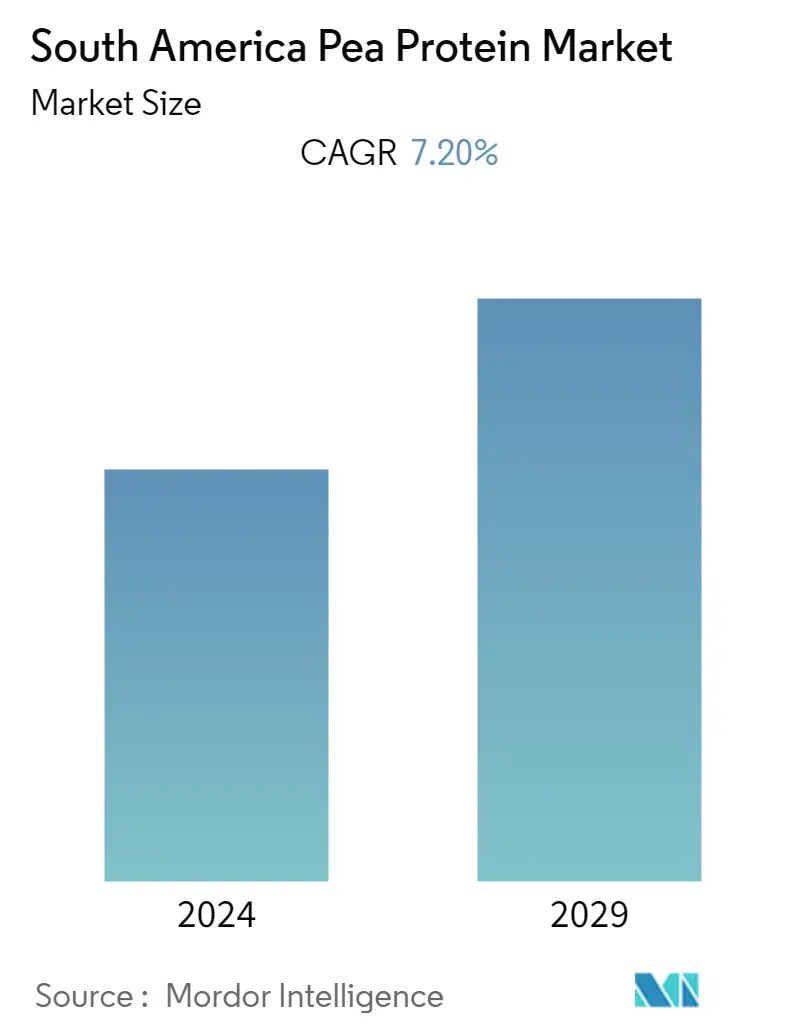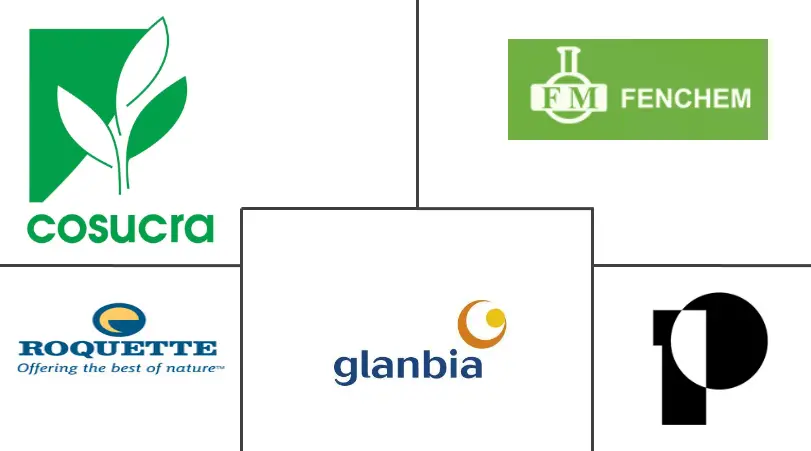Market Size of South America Pea Protein Industry

| Study Period | 2019 - 2029 |
| Base Year For Estimation | 2023 |
| Forecast Data Period | 2024 - 2029 |
| Historical Data Period | 2019 - 2022 |
| CAGR | 7.20 % |
| Market Concentration | Low |
Major Players
*Disclaimer: Major Players sorted in no particular order |
South America Pea Protein Market Analysis
South America Pea Protein Market is projected to grow at a CAGR of 7.2% during the forecast period.
- Young consumers are seeking plant-based functional foods, owing to greater inclination toward vegan diet and flexitarian diet concepts.
- The intake of animal protein is associated with high cholesterol level, fat, and calories, which increases the risk of cardiac disease, high blood sugar level and obesity. Hence, people are showing an inclination toward the vegan source of protein. This has created a good platform for the growth of the pea protein market.
- Pea proteins are perceived as a cost-effective way to follow healthy lifestyle, as it is a complete protein containing all nine essential amino acids (unlike rice or beans).
South America Pea Protein Industry Segmentation
South America Pea Protein Market is segmented By Type into Pea Protein Isolate, Pea Protein Concentrate, and Textured Pea Protein. Based on application, the market is segmented into Bakery, Meat Extenders & Substitutes, Nutritional Supplements, Beverages, Snacks and Other Applications. The study also involves the analysis of regional markets of Brazil, Argentina and Rest of South America.
| Type | |
| Pea Protein Isolates | |
| Pea Protein Concentrates | |
| Textured Pea Protein |
| Application | |
| Bakery | |
| Meat Extenders and Substitutes | |
| Nutritional Supplements | |
| Beverages | |
| Snacks | |
| Others |
| Geography | |
| Brazil | |
| Argentina | |
| Rest of South America |
South America Pea Protein Market Size Summary
The South America pea protein market is experiencing significant growth, driven by a shift in consumer preferences towards plant-based diets, such as vegan and flexitarian diets. This trend is largely due to health concerns associated with animal proteins, which are often linked to high cholesterol, fat, and calorie intake, increasing the risk of cardiac diseases, obesity, and high blood sugar levels. Pea protein is gaining popularity as a cost-effective and nutritious alternative, offering a complete protein source with all essential amino acids. The market is further bolstered by the rising demand for health and wellness products, particularly in Brazil, where consumers are increasingly seeking convenient food options that are rich in nutrients and health benefits. The demand for sports and nutrition products, as well as weight-management solutions, is also contributing to the market's expansion.
The textured pea protein segment is expected to witness rapid growth due to its application in meat analogs, extenders, and substitutes, catering to the increasing demand for protein-fortified products that are allergy-free and GMO-free. This segment's growth is supported by the nutritional benefits of meat analogs, which appeal to consumers looking to reduce their meat consumption due to cholesterol concerns. Companies in the South America pea protein market, such as Glanbia, Roquette Freres, Fenchem, and Cosucra-Groupe Warcoing, are focusing on strategies like acquisitions, expansions, and new product launches to enhance their market share. These companies are innovating to develop products with similar taste and texture to real meat, targeting both local and international markets to expand their plant protein business.
South America Pea Protein Market Size - Table of Contents
-
1. MARKET DYNAMICS
-
1.1 Market Drivers
-
1.2 Market Restraints
-
1.3 Porter's Five Forces Analysis
-
1.3.1 Threat of New Entrants
-
1.3.2 Bargaining Power of Buyers/Consumers
-
1.3.3 Bargaining Power of Suppliers
-
1.3.4 Threat of Substitute Products
-
1.3.5 Intensity of Competitive Rivalry
-
-
-
2. MARKET SEGMENTATION
-
2.1 Type
-
2.1.1 Pea Protein Isolates
-
2.1.2 Pea Protein Concentrates
-
2.1.3 Textured Pea Protein
-
-
2.2 Application
-
2.2.1 Bakery
-
2.2.2 Meat Extenders and Substitutes
-
2.2.3 Nutritional Supplements
-
2.2.4 Beverages
-
2.2.5 Snacks
-
2.2.6 Others
-
-
2.3 Geography
-
2.3.1 Brazil
-
2.3.2 Argentina
-
2.3.3 Rest of South America
-
-
South America Pea Protein Market Size FAQs
What is the current South America Pea Protein Market size?
The South America Pea Protein Market is projected to register a CAGR of 7.20% during the forecast period (2024-2029)
Who are the key players in South America Pea Protein Market?
Glanbia Plc, Fenchem, Roquette Freres, Cosucra-Groupe Warcoing and Puris Foods are the major companies operating in the South America Pea Protein Market.

